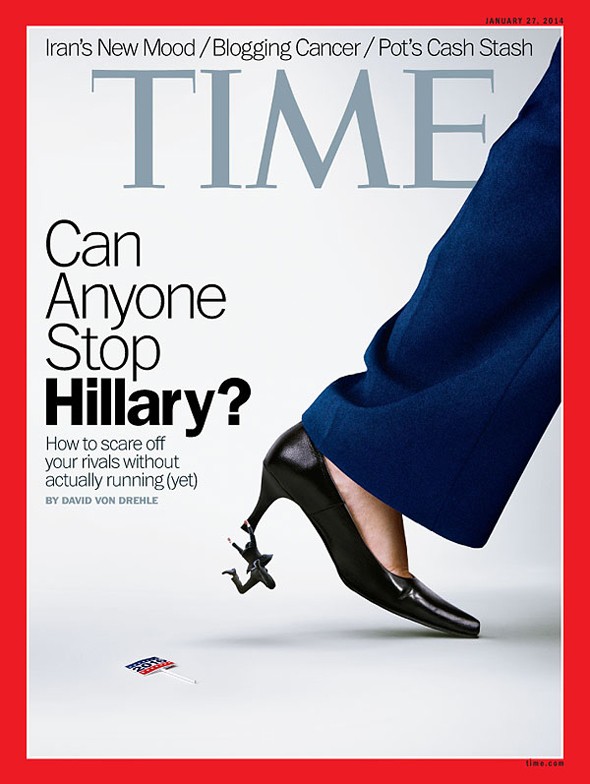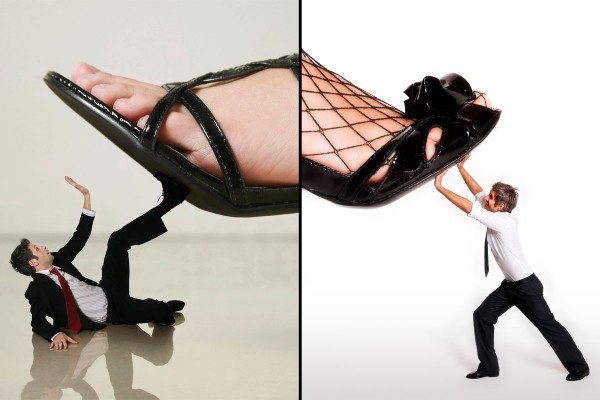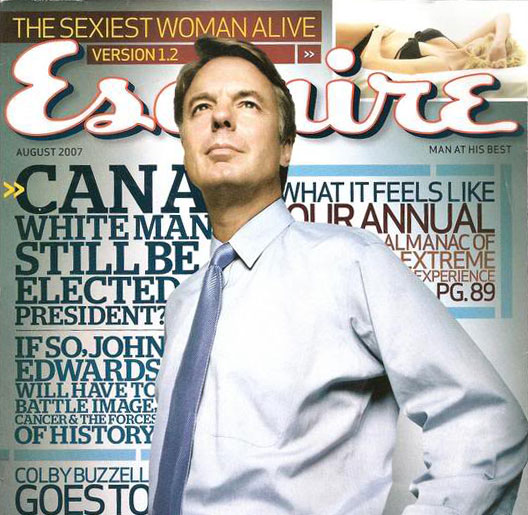Notes
Attack of the 50 Ft Ginger Rogers: Sexism and the TIME "Unstoppable Hillary" 2016 Cover
Time magazine prides itself on having visually provocative covers, but this latest one recycles a worn-out frame from the 2008 presidential campaign: Hillary the Entitled Ball-Buster. It also casts this formidable figure as the inevitable 2016 Democratic presidential nominee. The only thing that seems inevitable about 2016, however, is that the same old stereotypes will continue to shape Hillary Clinton’s public identity.
Following the week’s discussion of Clinton’s so-called “hit list” (if that’s what you want to call a completely routine record of political favors and snubs that folks from Fox News to Media Matters agree was accompanied by zero retaliation), viewers were primed for this image of a stereotypically ruthless Clinton. Feministing’s Chloe Angyal immediately called Time out for the way the image portrays Hillary “in the same old bullshit, sexist tone: she’s scary, she’s pushy, she’s stepping on men—guys, she is LITERALLY STEPPING ON A MAN IN THIS PHOTO.” But for every media outlet coming to Clinton’s defense there are twice as many recycling old stereotypes.
Visual incarnations of sexist stereotypes are powerful because they’re more difficult to debunk than news stories in which specific claims and quotations can be fact-checked. Images encourage audience members to supply part of the argument as they make sense of the picture. If you’re a feminist blogger, this image provides evidence of continued bias against powerful women. The more common reaction, however, is likely to be a Reaganesque “there you go again,” Hillary—stepping on the little guy in your obsessive quest for presidential authority. As Matt Law pointed out on Twitter, the spiked-heel-squishing-tiny-man meme is really just stock photo shorthand for an overbearing lady boss. In fact, Time’s cover art is so generic it could be a stock photo.
That this image accompanies a story about Clinton’s presidential prospects is critical. Whereas Time’s pictorial coverage of Clinton as Secretary of State touted her intelligence, gravitas, and even “badass cool,” the frame shifts when she’s in the running for a presidential nomination. As women inch closer to the White House, the “end of men” narrative popularized by Hannah Rosin ramps up. Gender relations are cast as a zero-sum game and the truly minute gains women are experiencing in political and professional spheres are cast as portents of men’s demise. This, too, is a recycled story. Early in the 2008 Democratic primary, when Clinton and Obama were duking it out with John Edwards, John Kerry, and other white male presidential contenders, Esquire magazine put Edwards on its cover and asked, “Can a White Man Still be Elected President?” (Answer: of course he can, as long as he doesn’t get caught cheating on his wife who is dying of cancer and then orchestrating an elaborate cover-up that requires his married campaign staffer to pose as the father to his mistress’s baby. But I digress.)
The Esquire cover, like the more recent Time cover, relies on hackneyed gender stereotyping for its appeal—nothing says “white! powerful! man!” like a photo of the subject confidently gazing outward as he is framed by a faceless, lingerie-clad woman.
Despite the gross gender stereotyping that persists in U.S. political culture, however, the potentially more damaging element of this Time cover is its air of inevitability. The headline asks, “Can Anyone Stop Hillary?” even as its art contends forcefully that no one can stall the march of the 50-foot feminist. As Kristina Horn Sheeler and I argue in our book Woman President: Confronting Postfeminist Political Culture, that culture would have us believe that the gender wars have been fought and that women have won—that we have entered a “postfeminist” era. Postfeminists cite opinion polls that claim, for example, that 95% of respondents are willing to vote for a “qualified” woman presidential candidate from their own party as evidence that the proverbial tide has turned. The argument suggests that U.S. politics are as amenable to women leaders as they are to men—that women “can and do capably run for president. They have the potential to be as popular with the U.S. electorate as male candidates. Any failure of their candidacies should properly be ascribed to their personal shortcomings or strategic miscalculations rather than to the continued influence of sexism in culture.”
The black spiked heel in the image is also rhetorically significant, as women candidates are often depicted as the Ginger Rogerses of political culture—doing everything that the men do, except “backwards and in high heels.” That narrative obfuscates the very real sexism with which women contend on a daily basis–the same sexism that helped make it possible for an untested (male) junior Senator to blow past the more experienced (female) frontrunner in the 2008 Democratic primary. As long as citizens and journalists profess support for potential female presidential candidates (especially the hypothetical ones that populate opinion polls), any opposition to actual women candidates is inoculated against charges of sexism.
The real question that journalists and pundits should be asking in advance of 2016 is not, “can anyone stop Hillary?” It is, “can anyone stop sexism?” Sexism has proven to be an even more resilient feature of U.S. political culture than the inimitable Hillary Clinton. And that’s saying something.
— Karrin Anderson | @KVAnderson
(photo-illustration 1: Justin Metz for TIME. Pants: Don Farrall/Getty Images, Man: BLOOM image/Getty Images, Shoe: yasinguneysu/Getty Images. photo/diptych 2: Corbis via NY Mag caption: Women’s Heels Conquering Tiny Men. image 3: Esquire 2007. photo unattributed online.)





Reactions
Comments Powered by Disqus